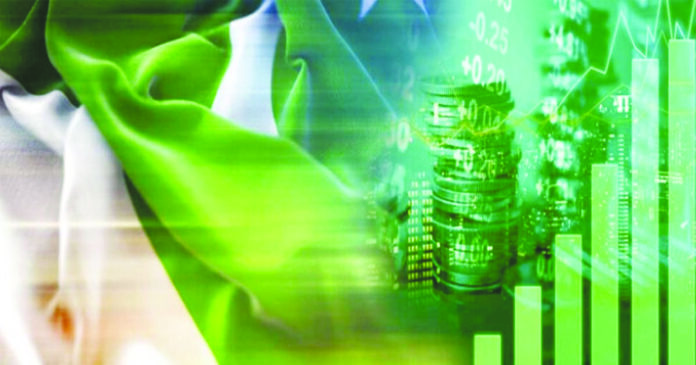According to projections from trustworthy institutions such as the World Bank, Asian Development Bank (ADB), and International Monetary Fund (IMF), Pakistan’s economic growth is anticipated to reach 1.7 per cent, 1.9 per cent, and 3.5 per cent, respectively. In the first meeting of the fiscal year 2024, the Monetary Policy Committee (MPC) supplied its projections, stating that the anticipated range for real GDP growth in FY-24 is 2.0 to 3.0 per cent. The significance of economic growth in the development process cannot be overlooked, as it is intricately linked to the overall wellbeing of a nation.
Given the current economic landscape, it becomes increasingly evident that Pakistan’s economy faces a pressing need for growth. The crux of the matter lies in the fact that Pakistan’s economy requires a minimum 6 per cent growth rate to effectively absorb the inflow of individuals entering the labour market. The growth rate must accelerate further to reduce the exceptionally high unemployment rate. The economic growth rate below the tipping point can be attributed to various internal and external factors.
The economic growth of Pakistan for FY23 remained slow at 0.29 percent. The slow growth is characterised by both domestic and international shocks. The internal shock, amongst others, of the flash floods that engulfed significant agricultural land has caused a domestic supply shock. This unfortunate event has jeopardised fiscal consolidation efforts and the resilience to the ongoing covid-19 crisis.
The forward and backward linkages of the agriculture sector had a significant impact on various commodity sectors. Flood damage has contributed a staggering amount of $14.9 billion, resulting in a significant loss of $15.2 billion in GDP. Additionally, the costs for rehabilitation have reached a substantial sum of $16.3 billion.
The lower confidence of the consumer and business community affects decision-making concerning spending, savings, and investments. Consequently, this contributes to sluggish economic growth and hampers the government’s efforts to achieve its tax collection target. Therefore, it is crucial to delineate the essential steps that can be taken to enhance the confidence of both consumers and entrepreneurs.
The international shock, amongst others, of the prolonged Russia-Ukraine conflict has had a more negative effect on global growth and inflation than anticipated. Consequently, elevated global prices worsen currencies, commodities, and production costs.
The growth-oriented components of Gross Domestic Product include several factors: consumption expenditure, investment expenditure, government expenditure, and exports of goods and services. The imports of goods and services, however, reduce the overall GDP. The favourable position of these components greatly contributes to facilitating the growth process.
In the fiscal year 2023, the sluggish economic growth can be attributed primarily to a decline of 1.42 per cent in consumption, 2.09 per cent in investment, 0.09 per cent in government expenditure, and 0.47 per cent in exports. There has been a significant decrease of 4.83 per cent in the import of goods and services. The reduction in imports has a noteworthy positive impact on economic growth, outweighing the negative effects of the four components. Particularly, demonstrates an interesting 0.29 per cent rise in economic growth.
The economic landscape for the upcoming fiscal year, FY-24, continues to present a familiar set of challenges. Government-imposed restrictions on imports and capital flows, domestic political uncertainty, surging world commodity prices, and tighter global financing all contribute to a less-than-optimistic outlook.
The households and firms, key actors in driving economic growth, are experiencing an unfavourable prospect. For instance, the consumption expenditure is likely to reduce due to the ongoing economic instability stemming from political instability. The economic instability is primarily attributed to the inadequate functioning of the foreign exchange market and the prevailing inflation outlook. These factors have led to a substantial decrease in consumer confidence, with a record low of 26 scale in the first quarter of FY24. The anticipated inflation rate of 20 to 22 percent, coupled with the implementation of tightened monetary and fiscal policies and heightened energy and fuel prices, ultimately dampens consumer spending, leading to a decline in purchasing power.
The business community currently lacks confidence in Pakistan’s prevailing economic outlook due to ongoing economic instability accompanying political uncertainty. The business confidence index has experienced a significant decrease, reaching an unprecedented low of 39 scale in the first quarter of FY24. The decline in business confidence can be attributed to an elevated policy rate of 22 percent, the implementation of import restrictions, increased input costs and the devaluation of the currency. These factors have also played a role in dampening business activities.
The lower confidence of the consumer and business community affects decision-making concerning spending, savings, and investments. Consequently, this contributes to sluggish economic growth and hampers the government’s efforts to achieve its tax collection target. Therefore, it is crucial to delineate the essential steps that can be taken to enhance the confidence of both consumers and entrepreneurs. It should be noted that these actions are contingent upon political stability. The accomplishment of political stability relies on the existence of a government that has significant political capital. This is a crucial factor in effectively fostering economic stability.























